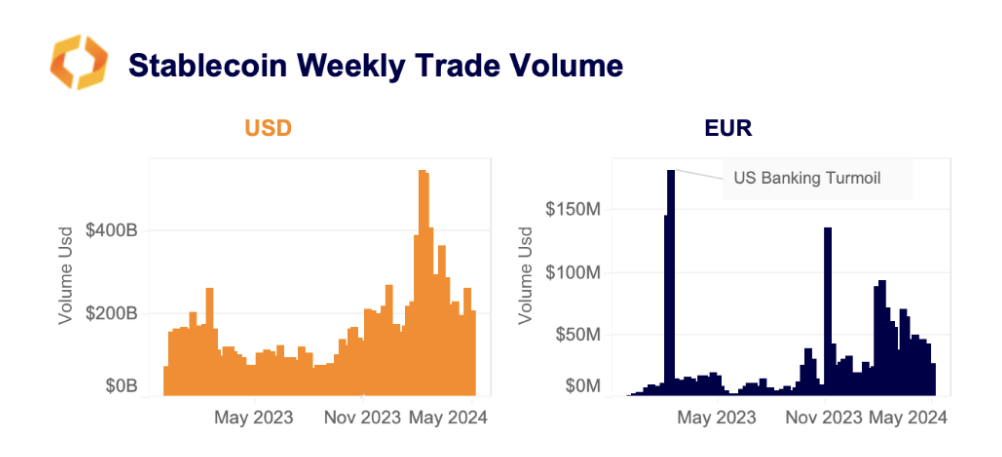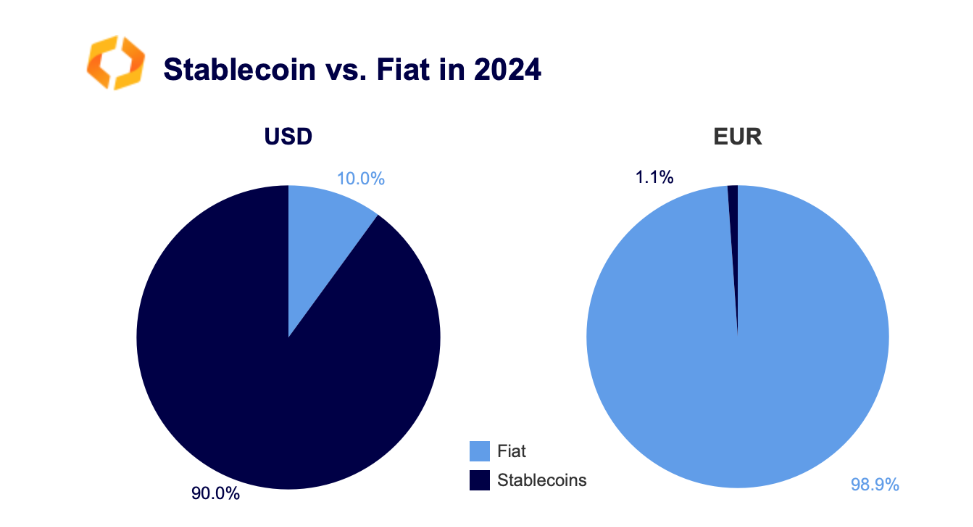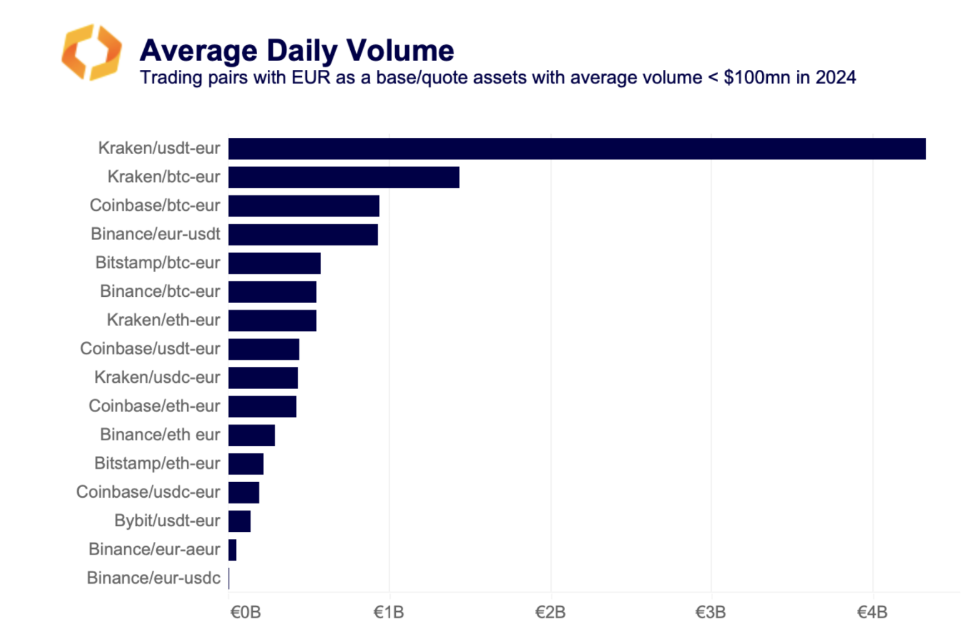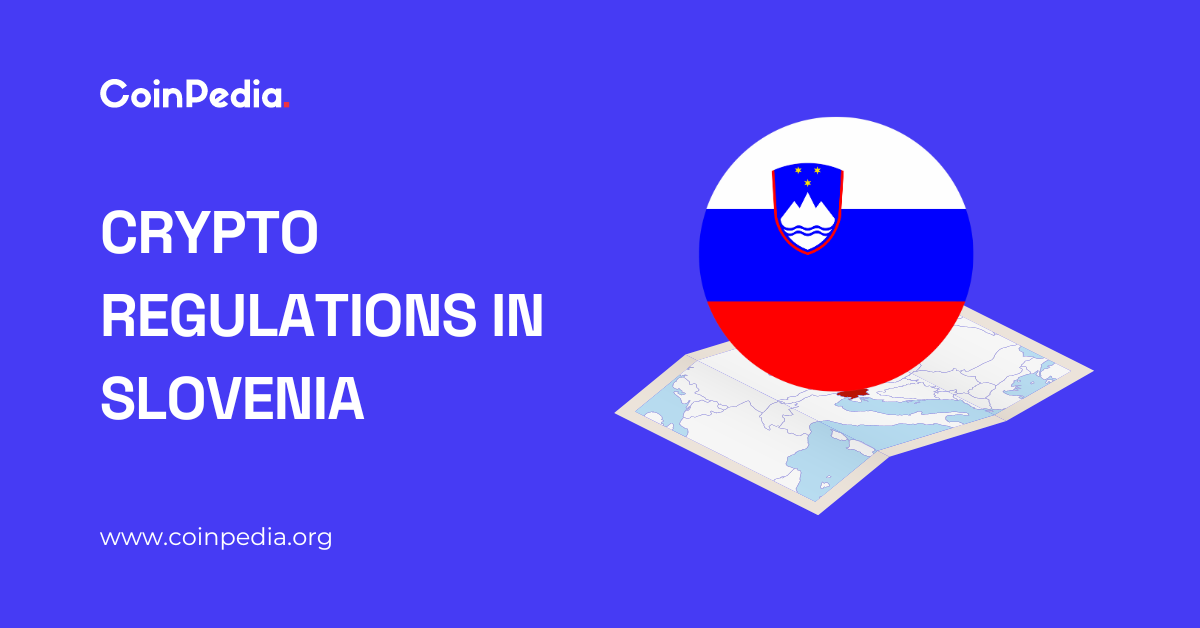Regulation
what does this mean for stablecoins?

On June 30, 2024, the “Markets in Crypto Assets” (MiCA) regulation will officially come into force on European territory and significant measures will be introduced to slow down the expansion of stablecoins managed from abroad in order to favor local ones related to the EURO.
The continent’s major exchanges such as Binance, OKX and Kraken have already prepared for the regulatory change and have reviewed some of the products offered to their customers in Europe.
However, all this could limit the Union’s technological expansion in the crypto sector, leading to a general regression rather than growth.
We delve deeper into the topic in this article.
MiCA and stablecoins: the crypto regulation that limits electronic money issuers will come into force from June 30th
On 10 October 2023 the regulation “Crypto Asset Markets” (MiCA) was approved by European Parliament with a favorable vote of 28 members, and now is about to come into force, officially marking the introduction of the first community regulation governing the crypto sector.
The topics in the new Text address a wide range of entities operating in the sector, such as crypto-asset issuers, crypto-asset service providers (CASPs), and crypto exchange platforms, addressing key issues such as protection of consumer, new obligations for anti-money launderingenvironmental impact and corporate social responsibility.
However, an entire section of the regulation is dedicated exclusively to the world of stablecoins, more precisely in relation to issuers electronic money token (EMT), that is, a specific type of crypto-asset that aims to maintain a stable value by referring to the value of an official currency.
This definition differs from that of Resource-referenced token (ART) which identifies crypto-assets aimed at maintaining a value relative to the combination of multiple assets or official currencies.
The MiCA establishes the tax relevance of exchanges (swaps) between cryptocurrencies and electronic money tokens, while exchanges from cryptocurrencies to asset-referenced tokens should not be considered in this sense.
Source: https://www.theblock.pro/
The new MiCa regulation also provides that the only stablecoins authorized to be freely traded in Europe are those that meet certain requirementssuch as their supervision by the European Banking Authority (EBA) and the presence of a specific “electronic money licence”.
These requirements severely limit some established stablecoins both in Europe and in other continents such as USDT, which becomes de facto illegal due to the lack of the specific license, which can be obtained in the case of depositing collateral assets with a credit institution based in the EU.
Furthermore, the new law which will soon come into force sets a maximum limit of 200 million euros in daily trading volume (quarterly average): This number is much lower than the volumes recorded daily by the main stablecoins in the cryptocurrency market.
According to some experts on the subject, such as Mathieu Hardy of the asset management app OSOM, this limitation of MiCa on the stablecoin front can be considered a strong discrimination against USD-pegged e-money tokens.
Looking at the average volume of the last 30 days of the main USD stablecoins, we can see how the top 10 diversified coins by blockchain belonging would well exceed the limit of 200 million euros per day.
Kaiko Research: A launchpad for EURO-pegged stablecoin cryptocurrencies
According to Kaiko Research, the upcoming MiCA regulation in Europe could re-evaluate the scope of EURO-pegged stablecoinsissued and managed by companies based in the Union.
The new regulation is in fact seen as a launching pad for local currency tokens, which currently still record particularly low volumes compared to those of other foreign electronic money tokens.
Already in recent months several credit institutions have moved to offer their own stablecoins, such as Société Générale with the launch of EURCV.
From October 2023 onwards, since the European Parliament approved the MiCA regulation, the weekly trading volumes of EURO-pegged stablecoins have recorded a sharp increase, even temporarily exceeding 100 million, suggesting that demand is finally increasing on European markets.

However, let us remember that the road to competing with products pegged to the US dollar is still very long.
To date, according to the data from The Block, 99.3% of Ethereum stablecoin market share is dominated by USD ones, while the respective EUR currencies garner just 0.63%.
The euro is still the “second best choice” compared to others FIAT currencies external to the dollar in this context, being the second most used currency in the stablecoin field.
Overall, the dollar-backed stablecoin continues to dominate the cryptocurrency bull and bear market.
Nearly 90% of all crypto transactions are executed using USD-backed stablecoins against the USD.
Their average weekly volume in 2024 was $270 billion, which is 70 times higher than their EU counterparts. In contrast, only 1.1% of all transactions are made using euro-backed stablecoins.
However, it is worth noting that this share has increased from almost zero in 2020 and is currently at an all-time high.

Although only time will tell whether the introduction of Mica will push euro-pegged stablecoins to compete with those from overseas, in the meantime Experts already agree that the regulation is having a positive impact on the cryptocurrency industry even before it actually comes into force.
For example, Dante Disparte, Head of Global Policy at Circle, noted in a post on VC investments in crypto projects on the continent increased almost 10-fold from 2022 to 2023, rising from the initial 5.9% to 47.6%.
Over the same period, the share of VC investments in the United States and Dubai decreased significantly.
The MiCA effect 🇪🇺🚀
The share of venture capital investments in European crypto projects increased almost 10-fold in a year, from a share of 5.9% in the first quarter of 2022 to 47.6% in the second quarter of 2023.
Regulatory clarity attracts capital and entrepreneurs from all over the world. Great development for cryptocurrencies in Europe! pic.twitter.com/kUVp3rwlg3
— Patrick Hansen (@paddi_hansen) May 9, 2023
Exchange, Tether and USDT: MiCA regulation as a step backwards for Europe
The main cryptocurrency exchanges operating in Europe have already prepared for the regulatory earthquake that will soon be unleashed with MiCaand they took steps to remove from their trading pairs those stablecoins deemed not to comply with the regulation.
Binance announced in this regard that it has differentiated its offer between stable currency”regulated” AND “not allowed“without however making explicit reference to which coins will be excluded for European customers.
What we know for now is that launchpads are present FDUSD will be suspended, and that the rewards in USDT for the “Spend-to-Earn” section will no longer be credited after June 29th, with the exception of the rewards accrued before this period: it is not clear, however, whether USDT, which appears to be the stablecoin most affected by the new regulation, it will still be able to be traded on Binance’s spot and futures markets.
The OKX exchange, however, delisted USDT already in Marchwithout referring to the MiCa regulation but with clear underlying links, while Kraken has recently denied intentions of similar delisting.
Meanwhile, from the latest news from the cryptocurrency market, the UpHold’s decision to delist 6 stablecoins including USDT, DAI, FRAX, GUSD, USDP and TUSD on July 1stexcluding USDC from the list, emerges.
Cryptocurrency exchange Uphold announced that due to MiCA in Europe on June 30, it will stop supporting multiple stablecoins, including Tether (USDT), Dai (DAI), Frax Protocol (FRAX), Gemini Dollar (GUSD), Pax Dollar (USDP) and TrueUSD (TUSD) starting July 1st. They will be…
— Wu Blockchain (@WuBlockchain) June 18, 2024
MiCA’s rise against USD-pegged stablecoins, although motivated to leave room for EURO counterparts, could generate onboarding issues for European exchange customerswho still use USDT as their primary means of switching from FIAT to CRYPTO.
In fact, as highlighted by data from Kaiko Research, both on Binance and Kraken, the USDT-EUR pair appears to be a more traded instrument in terms of volumes than BTC-EURO, demonstrating that the Tether currency represents an essential resource for the European markets.
In such an environment, while OTC trading will continue to provide USDT-EUR liquidity, many traders may choose to turn to regulated alternatives such as USDC.
 Source: https://research.kaiko.com/insights/what-mica-means-for-euro-stablecoins
Source: https://research.kaiko.com/insights/what-mica-means-for-euro-stablecoins
Paolo Ardoino, Tether’s current CEO, did so heavily criticized the upcoming Mica regulation, underlining how the obligation for issuers to hold at least 60% of reserves in bank deposits constitutes a counter-efficient measure in terms of security for the end customer.
The European Central Bank, in fact, only insures bank deposits up to 100,000 euros, a figure significantly lower than the market capitalization of the USDT, which amounts to 112 billion dollars.
Requiring issuers like Tether to build their reserves with simple bank deposits to comply with regulations offers a possible premise for one of the largest financial disasters in the world of crypto finance in the event of a custodian bank collapse.
As a reminder, Tether currently holds reserves of cash and cash equivalents, US Treasuries, precious metals, Bitcoin and other investments, offering a perfectly differentiated asset allocation weighted by financial situation of the technology giant, which recorded profits of $4.5 billion in the first quarter of 2024.
 USDT Reserves. Source: https://tether.to/en/transparency/?tab=reports
USDT Reserves. Source: https://tether.to/en/transparency/?tab=reports
Source
Regulation
Cryptocurrency Regulation in Slovenia 2024

Slovenia, a small but highly developed European country with a population of 2.1 million, boasts a rich industrial history that has contributed significantly to its robust economy. As the most economically developed Slavic nation, Slovenia has grown steadily since adopting the euro in 2007. Its openness to innovation has been a key factor in its success in the industrial sector, making it a favorite destination for cryptocurrency enthusiasts. Many believe that Slovenia is poised to become a powerful fintech hub in Europe. But does its current cryptocurrency regulatory framework support such aspirations?
Let’s explore Slovenia’s cryptocurrency regulations and see if they can push the country to the forefront of the cryptocurrency scene. My expectations are positive. What are yours? Before we answer, let’s dig deeper.
1. Cryptocurrency Regulation in Slovenia: An Overview
Slovenia is known for its pro-innovation stance, providing a supportive environment for emerging technologies such as blockchain and cryptocurrencies. Under the Payment Services and Systems Act, cryptocurrencies are classified as virtual assets rather than financial or monetary instruments.
Regulation of the cryptocurrency sector in Slovenia is decentralized. Different authorities manage different aspects of the ecosystem. For example, the Bank of Slovenia and the Securities Market Agency supervise cryptocurrency transactions to ensure compliance with financial laws, including anti-money laundering (AML) and counter-terrorist financing regulations. The Slovenian Act on the Prevention of Money Laundering and Terrorist Financing (ZPPDFT-2) incorporates the EU’s Fifth Anti-Money Laundering Directive (5MLD) and aligns with the latest FATF recommendations. All virtual currency service providers must register with the Office of the Republic of Slovenia.
2. Cryptocurrency regulation in Slovenia: what’s new?
This year, there have been several noteworthy developments in the cryptocurrency sector in Slovenia:
July 25, 2024: Slovenia has issued a €30 million on-chain sovereign digital bond, the first of its kind in the EU, with a yield of 3.65%, maturing on 25 November 2024.
May 14, 2024: NiceHash has announced the first Slovenian Bitcoin-focused conference, NiceHashX, scheduled for November 8-9 in Maribor.
3. Explanation of the legal framework for cryptocurrency taxation in Slovenia
Slovenia’s cryptocurrency tax framework provides clear guidelines for both individuals and businesses. According to the Slovenian Tax Administration, tax treatment depends on the status of the trader and the nature of the transaction.
- Individuals: Income earned from cryptocurrencies through employment or ongoing business activities is subject to personal income tax. However, capital gains from trading or market fluctuations are exempt from taxation.
- Society: Capital gains from cryptocurrency activities are subject to a corporate income tax of 19%. Value added tax (VAT) generally applies at a rate of 22%, although cryptocurrency transactions considered as means of payment are exempt from VAT. Companies are not allowed to limit payment methods to cryptocurrencies only. Tokens issued during ICOs must comply with standard accounting rules and the Corporate Tax Act.
4. Cryptocurrency Mining in Slovenia: What You Should Know
Cryptocurrency mining is not restricted in Slovenia, but the income from mining is considered business income and is therefore taxable. This includes rewards from validating transactions and any additional income from mining operations. Both natural persons and legal entities must comply with Slovenian tax regulations.
5. Timeline of the evolution of cryptocurrency regulations in Slovenia
Here is a timeline highlighting the evolution of cryptocurrency regulations in Slovenia:
- 2013:The Slovenian Tax Administration has issued guidelines according to which income from cryptocurrency transactions should be taxed.
- 2017:The Slovenian Tax Administration has provided more detailed guidelines on cryptocurrency taxation, based on factors such as the trader’s status and the type of transaction.
- 2023The EU has adopted the Markets in Cryptocurrencies Regulation (MiCA), which establishes a uniform regulatory framework for cryptocurrencies, their issuers and service providers across the EU.
Final note
Slovenia’s approach to the cryptocurrency industry is commendable, reflecting its optimistic view of the future of cryptocurrency. The country’s balanced regulatory framework supports cryptocurrency innovation while protecting user rights and preventing illegal activities. Recent developments demonstrate Slovenia’s commitment to continuously improving its regulatory environment. Slovenia’s cryptocurrency regulatory framework sets a positive example for other nations navigating the evolving cryptocurrency landscape.
Read also: Cryptocurrency Regulation in Hong Kong 2024
Regulation
A Blank Slate for Cryptocurrencies: Kamala Harris’ Regulatory Opportunity

Photo by The Dhage of Shubham ON Disinfect
As the cryptocurrency landscape continues to evolve, the need for clear regulation has never been greater.
Vice President Kamala Harris is now leading the charge on digital asset regulation in the United States, presenting a unique opportunity for a clean slate. This fresh start can foster innovation and protect consumers. It can also pave the way for widespread adoption across industries, including real estate agencies, healthcare providers, and online gambling platforms like these online casinos in the uk. According to experts at SafestCasinoSites, these platforms have advantages such as bonus offers, a wide selection of games, and various payment methods. Ultimately, all this increased adoption could push the cryptocurrency market forward.
With that in mind, let’s take a look at the current state of cryptocurrency regulation in the United States, which is a complex and confusing landscape. Multiple agencies, including the Securities and Exchange Commission (SEC), the Commodity Futures Trading Commission (CFTC), and the Financial Crimes Enforcement Network (FinCEN), have overlapping jurisdictions, creating a fragmented regulatory environment. This lack of clarity has hindered innovation, as companies are reluctant to invest in the United States, fearing regulatory repercussions. A cohesive and clear regulatory framework is urgently needed to unlock the full potential of cryptocurrencies in the United States.
While the US struggles to find its footing, other countries, such as Singapore and the UK, are actively embracing the cryptocurrency industry with clear and supportive regulatory frameworks. This has led to a brain drain, with companies opting to set up in more hospitable environments.
Vice President Kamala Harris has a unique opportunity to change this narrative and clean up the future. cryptocurrency regulation. By taking a comprehensive and inclusive approach, it can help create a framework that balances consumer protection with innovation and growth. The time has come for clear and effective regulation of cryptocurrencies in the United States.
Effective regulation of digital assets is essential to fostering a safe and innovative environment. Key principles guiding this regulation include clarity, innovation, global cooperation, consumer protection, and flexibility. Clear definitions and guidelines eliminate ambiguity, while encouraging experimentation and development to ensure progress. Collaboration with international partners establishes consistent standards, preventing regulatory arbitrage. Strong safeguards protect consumers from fraud and market abuse, and adaptability allows for evolution in response to emerging trends and technologies, striking a balance between innovation and protection.
The benefits of effective cryptocurrency regulation are many and far-reaching. By establishing clear guidelines, governments can attract investors and traditional users, spurring growth and adoption. This, in turn, can position countries like the United States as global leaders in financial technology and innovation. Strong protections will also increase consumer confidence in digital assets and related products, boosting economic activity.
A thriving cryptocurrency industry can significantly contribute to GDP and job creation, which has a positive impact on the overall economy. Furthermore, effective regulation has paved the way for the growth of many companies such as tech startups, online casinos, and pharmaceutical companies, proving that clear guidelines can unlock new opportunities without stifling innovation. This is a great example of how regulation can alleviate fears of regressive policies, even if Kamala Harris does not repeal the current progressive approach. By adopting effective regulation, governments can create fertile ground for the cryptocurrency industry to thrive, driving progress and prosperity.
Regulation
Think You Own Your Crypto? New UK Law Would Ensure It – DL News

- The UK Law Commission has developed a bill that will address a situation of legal uncertainty.
- The commission’s goal is to ensure that cryptocurrencies are legally treated as personal property.
UK law is not entirely clear whether cryptocurrencies can be considered personal property.
This is according to the UK Law Commission, which argues that while most investors assume that when they buy cryptocurrencies, they are “acquiring property rights in the same way as buying, say, a watch or a laptop.”
“As the law currently stands, this is not necessarily the case,” the respected legal body said in a new report on Tuesday.
The report was accompanied by a solution: a new bill to consolidate the legal status of digital assets as personal property.
This could be huge for the estimated 4.7 million Britons valued hold cryptocurrencies.
“This will allow the courts to determine a range of issues,” the report says.
If passed, the law would help clarify how cryptocurrencies are treated in cases of bankruptcy, estate planning or theft.
Flexible law
The commission is an independent body responsible for reviewing UK law. It began investigating whether English and Welsh property laws apply to digital assets in 2020.
Join the community to receive our latest stories and updates
At the time, then-Chancellor of the Exchequer Rishi Sunak expressed ambitions to transform the UK into a cryptocurrency hub as Britons invested more.
In 2023, the commission decided that, in most cases, the legislation of England and Wales is sufficiently flexible to regulate cryptocurrencies.
This means that any asset, from Bitcoin to non-fungible tokens and some types of digital contracts, can be considered personal property, without Parliament having to write extensive new laws.
There was one small area of uncertainty, however: it was unclear whether cryptocurrencies fell within the two categories of personal property recognised under UK law.
These two categories are made up of tangible assets (cars, laptops, bags) and intangible assets (contracts, stocks, and debt).
The bill that will now go to Parliament to be converted into law aims to remedy this situation.
Without that clarification, courts may try to lump cryptocurrencies together with intangible assets, said Adam Sanitt, head of litigation, knowledge, innovation and corporate support EMEA at law firm Norton Rose Fulbright. DL News in March.
This is problematic because intangible assets are creations of the legal system, while cryptocurrencies are not.
“How the law treats digital assets, what rights you have over them, how you own them, how you transfer them to other people—that treatment is different, because digital assets don’t exist by virtue of the legal system, but independently of it,” Sanitt said.
The money in your bank account, for example, is a legal creation. The government could pass a law to cancel it.
However, if the UK passed a law banning Bitcoin, Bitcoin would not cease to exist.
Sanitt said: “That’s why digital assets are so important: neither the government nor the legal system can take them away from you.”
Contact the author at joanna@dlnews.com.
Regulation
The Solution the Cryptocurrency Industry Needs

The cryptocurrency industry has performed remarkably well since its inception, but now faces a critical hurdle that requires careful consideration and regulatory expertise to overcome. Despite the industry’s rapid growth and rate of global adoption, the gap between the industry and global regulation is only widening as new innovations break through into the public domain.
Although efforts are being made on both sides, regulators’ lack of familiarity with cryptocurrencies and the industry’s lack of regulatory expertise are hindering innovation in the sector. To address this issue, traditional financial institutions (TradFi) such as MultiBank Group have started venturing into the cryptocurrency sector.
The regulatory gap
Over the past decade, the cryptocurrency industry has grown dramatically as tech entrepreneurs and forward-thinking thinkers have founded a plethora of crypto platforms and protocols to push the boundaries of the space. The problem faced by these newcomers, who are often unfamiliar with the hurdles posed by financial regulators, can quickly overwhelm and stall operations.
On the other hand, regulators more attuned to TradFi systems may be equally stifled by the complexities of decentralization and blockchain technology. The unfamiliarity experienced by both innovators and regulators creates a stark regulatory divide between both sides, leading to misunderstandings and potential conflicts.
To overcome this lack of communication, a bridge must be built to bridge the gap, ensuring future stability for the cryptocurrency industry and clearer legislation from regulators.
Efforts to bridge the gap between industry
The gap between the cryptocurrency industry and regulators is slowly narrowing as efforts to regulate cryptocurrencies and Web3 space activities are gaining momentum. Specific regulatory actions are taking place in many countries, aimed at providing greater oversight of cryptocurrency transactions, cryptocurrency exchanges, and initial coin offerings (ICOs).
Despite being a positive step in the right direction, these new regulations can differ significantly between jurisdictions around the world. This fragmentation results in a regulatory environment filled with obstacles, bottlenecks, and varying requirements and prohibitions. As cryptocurrency companies and TradFi institutions attempt to navigate the minefield, the regulatory maze becomes increasingly convoluted.
TradFi institutions like MultiBank Group are working to solve this problem, as one of the largest financial derivatives institutions in the world with over 12 licenses across all continents. Founded in 2005, the Group has an impeccable and trustworthy reputation globally, extensive expertise in financial regulation and has now ventured into the cryptocurrency space via MultiBank.io.
MultiBank.io: TradFi Excellence in the Crypto Space
Expanding into the cryptocurrency space via MultiBank.io has enabled MultiBank Group to provide regulatory clarity and trust to the digital asset industry. With a substantial daily trading volume of $12.1 billion, the timely decision to enter the cryptocurrency space has the potential to set regulatory precedents and standards for years to come.
By helping to develop sensible and well-considered regulations, MultiBank.io’s established reputation allows the company to communicate effectively and clearly with regulators. Unlike others in the industry without regulatory expertise, MultiBank.io facilitates the Group’s commitment to rigorous regulatory standards, the scope of oversight and establishes the necessary transparency.
The company’s approach ensures that regulatory licenses are pre-acquired, compliance is met globally without jurisdictional barriers, and transactions remain secure at all times. By helping to create robust regulations that are both clear and innovation-friendly, MultiBank Group looks forward to standardizing the entire cryptocurrency industry for other potential innovators.
One of the biggest challenges in establishing a clearly constructed bridge between regulators and the cryptocurrency industry is effective communication. By leveraging its institutional background TradFi and acting as an intermediary with regulators, MultiBank Group is able to translate the needs of the industry to those who shape it.
This quality of mediation is essential to ensure that regulation helps develop essential technological advances rather than hinders their establishment and growth. Through the lens of TradFi when looking at the complexity of the cryptocurrency industry, MultiBank Group is able to deconstruct unfamiliar crypto arguments for regulation and create a safer and more secure space.
Where TradFi and Crypto Meet
Regulations are crucial for traders, investors, and everyday users of crypto platforms and their safety when participating in crypto markets. While strict regulations are necessary for stable market integrity, innovation should still be considered, something MultiBank Group considers a priority.
Where TradFi and cryptocurrencies converge, the Group is there to provide a balanced approach to ensure promotion for both the cryptocurrency industry and regulators seeking to protect both retail and institutional investors. This balance is critical to maintaining a thriving space where cryptocurrency innovation can thrive without compromising the security of user funds or data.
As more TradFi institutions like MultiBank Group enter the cryptocurrency space with ever-expanding expertise in regulatory understanding, the future of the industry is increasingly encouraged. The financial freedoms of the cryptocurrency space coupled with regulatory oversight for financial security will be the guiding lights for the future success of the entire cryptocurrency industry.
No spam, no lies, just insights. You can unsubscribe at any time.
-

 Ethereum12 months ago
Ethereum12 months agoEthereum Posts First Consecutive Monthly Losses Since August 2023 on New ETFs
-

 Regulation12 months ago
Regulation12 months agoCryptocurrency Regulation in Slovenia 2024
-

 News12 months ago
News12 months agoNew bill pushes Department of Veterans Affairs to examine how blockchain can improve its work
-

 Regulation12 months ago
Regulation12 months agoThink You Own Your Crypto? New UK Law Would Ensure It – DL News
-

 Regulation12 months ago
Regulation12 months agoUpbit, Coinone, Bithumb Face New Fees Under South Korea’s Cryptocurrency Law
-

 Regulation12 months ago
Regulation12 months agoA Blank Slate for Cryptocurrencies: Kamala Harris’ Regulatory Opportunity
-

 Regulation12 months ago
Regulation12 months agoBahamas Passes Cryptocurrency Bill Designed to Prevent FTX, Terra Disasters
-

 Regulation12 months ago
Regulation12 months agoIndia to Follow G20 Policy for Cryptocurrency Regulation: MoS Finance
-

 News1 year ago
News1 year ago“Captain Tsubasa – RIVALS” launches on Oasys Blockchain
-

 Ethereum1 year ago
Ethereum1 year agoComment deux frères auraient dérobé 25 millions de dollars lors d’un braquage d’Ethereum de 12 secondes • The Register
-

 News12 months ago
News12 months agoEU supports 15 startups to fight online disinformation with blockchain
-

 News1 year ago
News1 year agoSolana ranks the fastest blockchain in the world, surpassing Ethereum, Polygon ⋆ ZyCrypto













